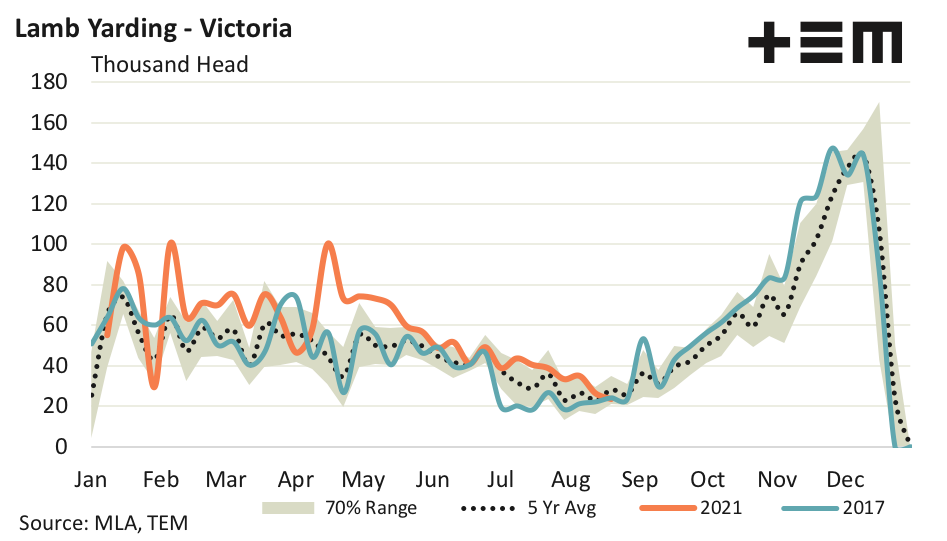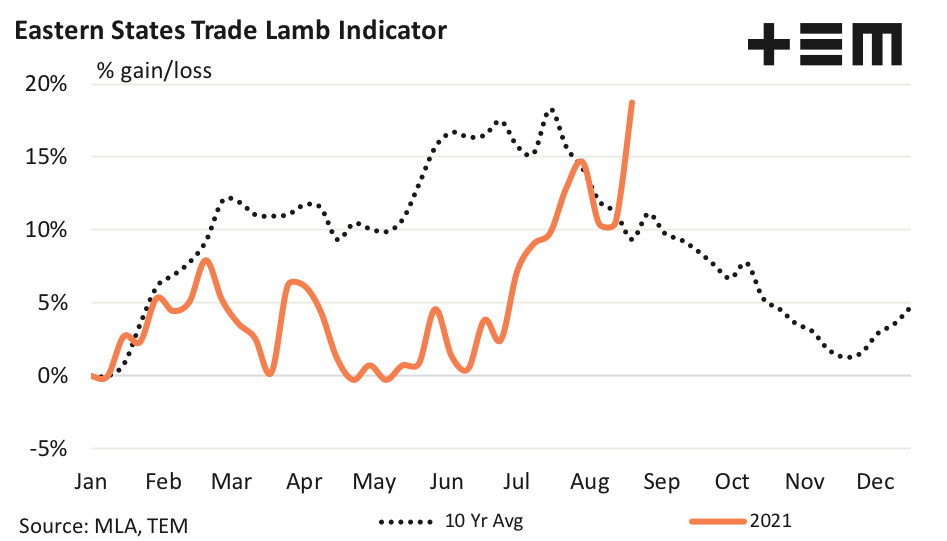Dan’s closing hours

The Snapshot
- Abattoirs of 25 staff or more within the Melbourne region there will be a workforce reduction of 20% enforced.
- Average weekly lamb throughput lifts from 25,000 head per week during August to around 37,000 per week in September, then to 60,000 head in October. By summer it can be above 100,000 head per week.
- Victorian abattoirs processed 50% of the national lamb off-take and nearly 40% of the sheep slaughter.
Over the weekend Victorian Premier Daniel Andrews announced capacity restrictions on high risk Covid-19 transmission industries such as meat processing facilities. It is understood that for abattoirs of 25 staff or more within the Melbourne region there will be a workforce reduction of 20% enforced as of midnight tonight.
This restriction on processing capacity for Victoria comes at an ominous time as the state is about to start its seasonal spring flush of lambs. The weekly Victorian lamb throughput patterns highlights the low ebb in volumes is usually seen during August each year. However, September brings the start of increased weekly lamb yarding levels with average weekly volumes lifting from 25,000 head per week during August to around 37,000 per week in September, according to the five-year average trend.
In October this lifts again to about 60,000 head of lamb. During November/December it is not uncommon to see weekly lamb yarding levels between 90,000 to 130,000 head.
It is important that Victorian abattoirs are able to be fully operational during the spring flush as they dominate the national share of sheep and lamb processing. Indeed, in 2020 Victorian abattoirs processed 50% of the national lamb off-take and nearly 40% of the sheep slaughter. NSW is the next largest processor of lamb and sheep, but they are well behind Victorian levels, accounting for about 30% of lamb and 25% of sheep slaughter.
Victorian and NSW lamb yarding levels have been easing over the last fortnight, possibly in response to the announcement that Fletcher’s Dubbo sheep and lamb processing plant was going to suspend their buying activity for a week. The result of the tighter supply was to see the Eastern States Trade Lamb Indicator (ESTLI) rally last week to hit a seasonal peak of 958c/kg cwt.
However, as the seasonal gain/loss average pattern highlights it is common to see lamb prices ease once the spring flush kicks in. Price declines in the ESTLI from late winter to summer can usually be seen of around 15% to 20%. The potential for the Victorian abattoir restrictions to reduce processing capacity could place additional price pressure during spring, particularly if the restrictions drag on into late spring or early summer.
It is not out of the question that processing bottlenecks during the spring flush could see the ESTLI ease 30% or so, from current levels, which would put the ESTLI back under 700c/kg cwt.



